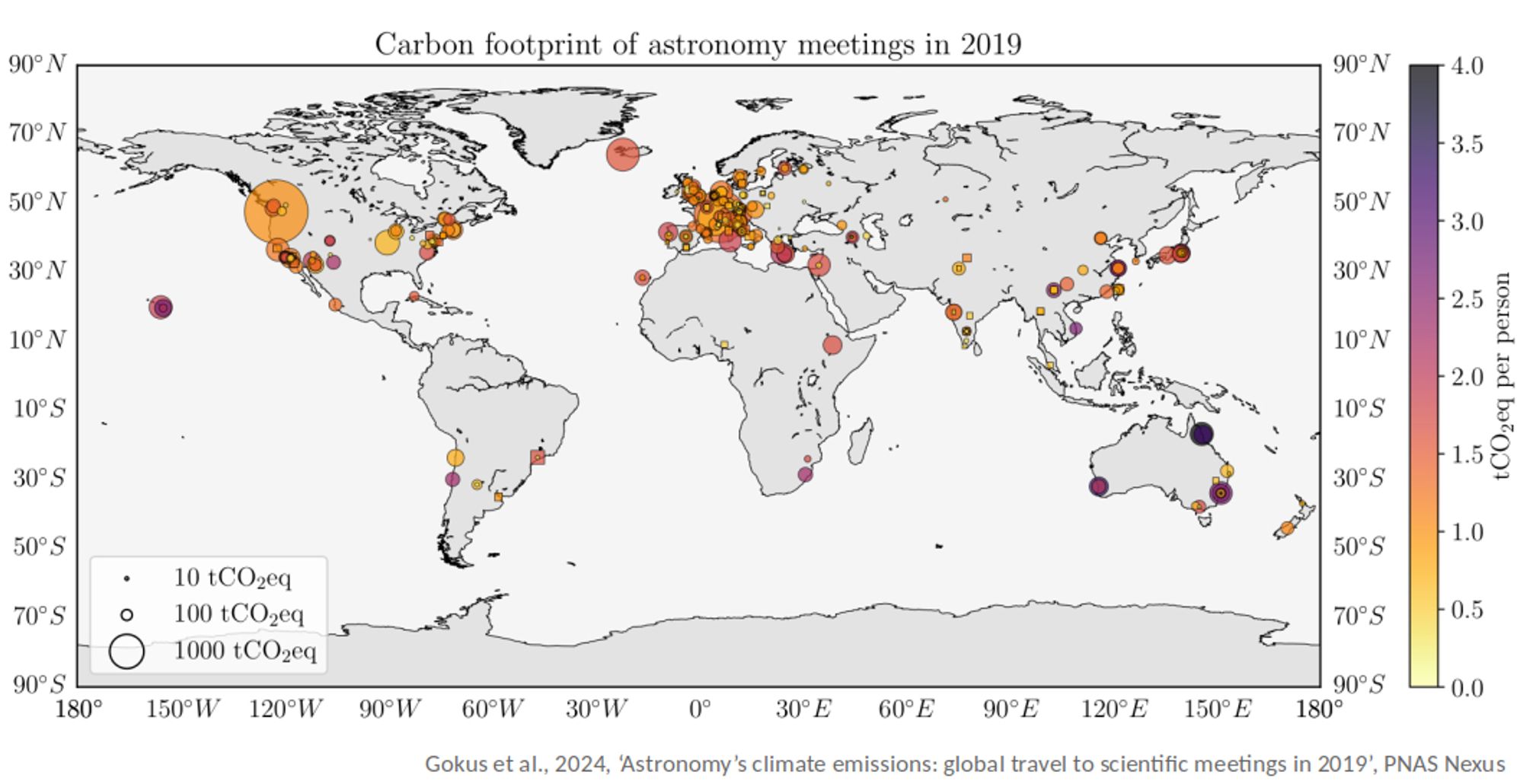AG
Andrea Gokus
@agokus.bsky.social
McDonnell PostDoc Fellow at WashU in Saint Louis, working on active galactic nuclei.
Enthusiastic about music 🎶 , space 🚀, dogs🐕 and saving planet Earth 🌎.
32 followers45 following27 posts
How much did astronomers actually travel in terms of distance in 2019 in total? More than 300 times to the moon and back! Or, to put it in astronomical units: more than 1.5 AU! doi.org/10.1093/pnas... A🧵summarizing our paper, written together with members of Astronomers for Planet Earth:

#Astronomy is a very internationally collaborative field, but as can be seen from the map, the majority of meetings tend to take place in Europe and North America. Meetings in remote places cause more flights → more emissions. Our estimation is at least 42,500 tCO2e in total.

AG
Andrea Gokus
@agokus.bsky.social
McDonnell PostDoc Fellow at WashU in Saint Louis, working on active galactic nuclei.
Enthusiastic about music 🎶 , space 🚀, dogs🐕 and saving planet Earth 🌎.
32 followers45 following27 posts